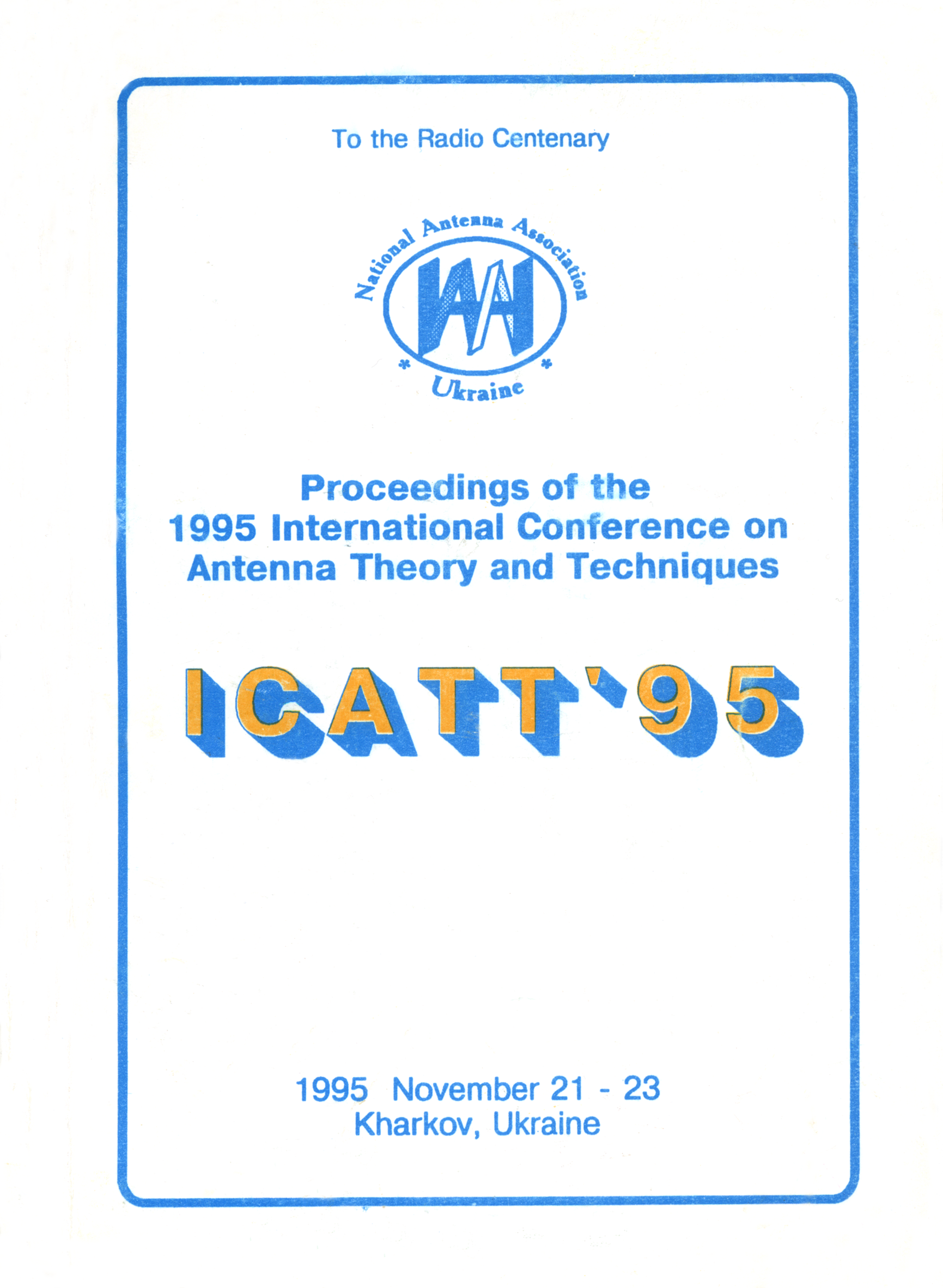Antenna set for multi-channel TV system
DOI:
https://doi.org/10.1109/ICATT.1995.1234156Abstract
One of the directions in the development of the urban TV networks is switching to the non-traditional frequency ranges. In particular, this is the range, which is widely used in systems of direct satellite TV broadcasting.
The choice of this range can be explained by the saturation of commercial market of receiving equipment such as converters and tuners first of all. Transmitting antenna for such a network should have a circular horizontal plane directional pattern (DP) and have as high gain as possible.
The consumer receiver antennas should have a moderate size, 20 to 30 cm in diameter, and suitable for to be placed on a window sill or a TV-set (in the case of direct vision) or to be fixed on a house wall or a balcony fence.
The transmitting antenna meeting the above mentioned requirements has a main axis-symmetric parabolic reflector, an auxiliary axis- symmetric ellipsoidal ref-lector, and a hyperbolic subdish and also the primary feed and the fixing elements.
The parabolic generator of the main reflector has the vertex at the point 0, which is displaced by some distance with respect to the antenna axis of symmetry. The reflector surfaces are formed by rotating around this axis. The elliptic generator of auxiliary reflector is oriented in such a way that one of its focuses coincides with parabola’s focus, which has a ring-like shape. The second focus coincides with the focus of the hyperbolic subdish. Hyperbola’s second focus coincides with the phase center of the feed. The optimization of antenna’s structural parameters was performed by the barycentrical method [1], As a result the antenna was designed and manufactured with the following parameters: main reflector diameter 946 mm; parabola focal distance 108.6 mm; auxiliary reflector diameter 264 mm; auxiliary reflector eccentricity –0.58; subdish diameter 130 mm; eccentricity 2.84.
The measurements showed that irregularity of the horizontal directional pattern was not more than 2 dB when antenna’s gain was more than 15.5 dB. The subscripter’s receiving antenna is a two-reflector one and consists of the main reflector with a diameter 0.25 or 0.38 m and feed system. These dimensions of antenna provide a stable reception of TV signal from the direct vision distance of 35 km provided that converter’s noise ratio was 2.0 dB.
The feed system consists of the open-ended waveguide with the elements of directional pattern’s correction in orthogonal planes, and a plane subdish fixed to the feed with the aid of dielectric unit. TV distributing systems using the designed antenna set are installed in Kremenchug and Sevastopol, and are planed to be installed in Poltava and other Ukrainian cities.

